If you have been cooking for long, then you probably have a few recipes that you count on when you want something easy. These simple sanioura cookies are ones I turn to when I need a quick and tasty cookie, but fair warning, they are dangerous to keep around, you’ll be snacking on them all day long! Watch the video tutorial below.
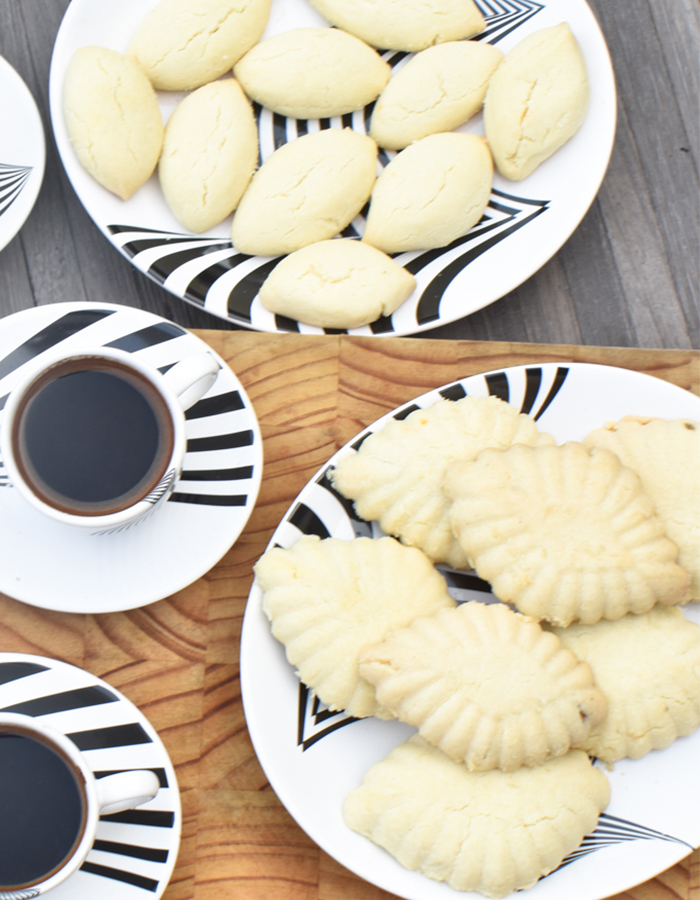
Plain and Pistachio Filled Sanioura (Video)
“Sanioura” are simple cookies at their core, and have a gratifying crunch that melts into sweet and buttery tenderness in your mouth—great for the holidays and gatherings and are easy to make; they belong to the “Ghraybeh” family.
Sanioura is a shortbread cookie that hails from Saida (Saidon) south of Lebanon, the city has a reputation for being home to some of the best Lebanese sweets, and one of the most celebrated desserts is Sanioura, it is scrumptious with a straightforward ingredient list: ghee, powdered sugar and flour.
I’ve offered the two famous variations: The same dough can deliver both plain and another sanioura with a sweet pistachio surprise inside. If you want some of each, divide the dough into two portions! Watch the video tutorial below.
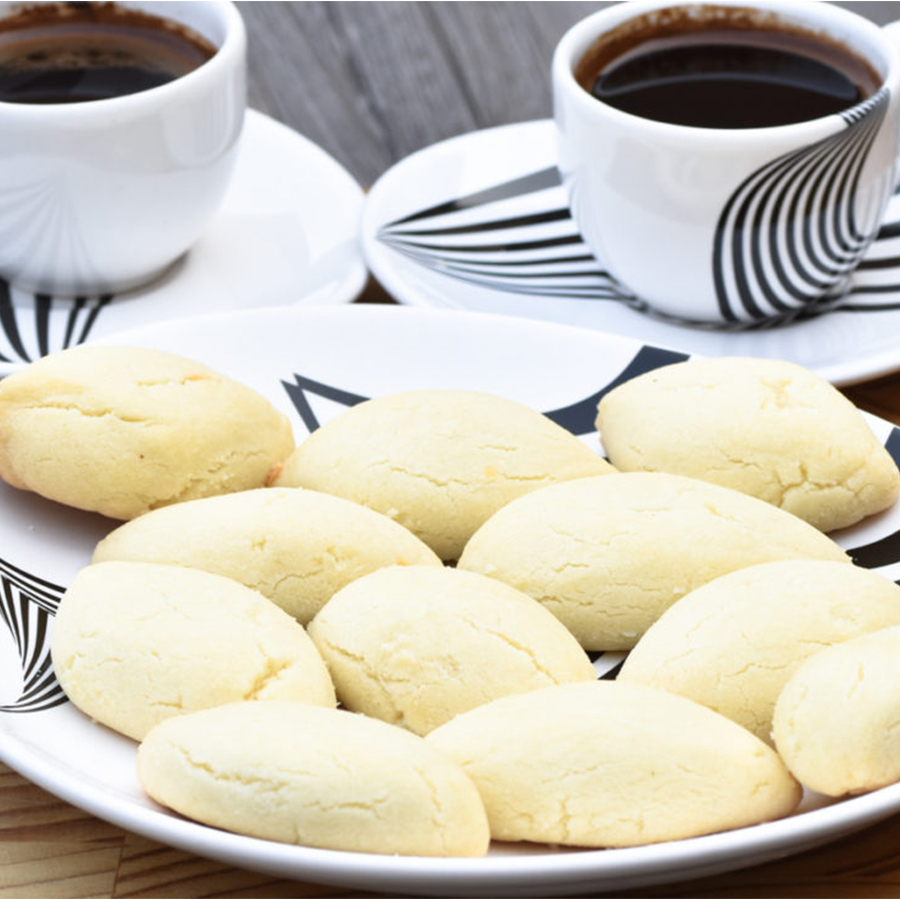
The dough is easy to make, with only three simple ingredients, everything comes together in one bowl. You add the ghee, powdered sugar, then, you dump the flour in, and with your fingers, mix until you get crumbly dough that comes together when you press it with your fingers. Cover with plastic warp and chill for 30 minutes. The reason for chilling is to solidify the fat in the dough so the cookies retain their shape and won’t spread in the oven, 30 minutes chilling will do the trick.
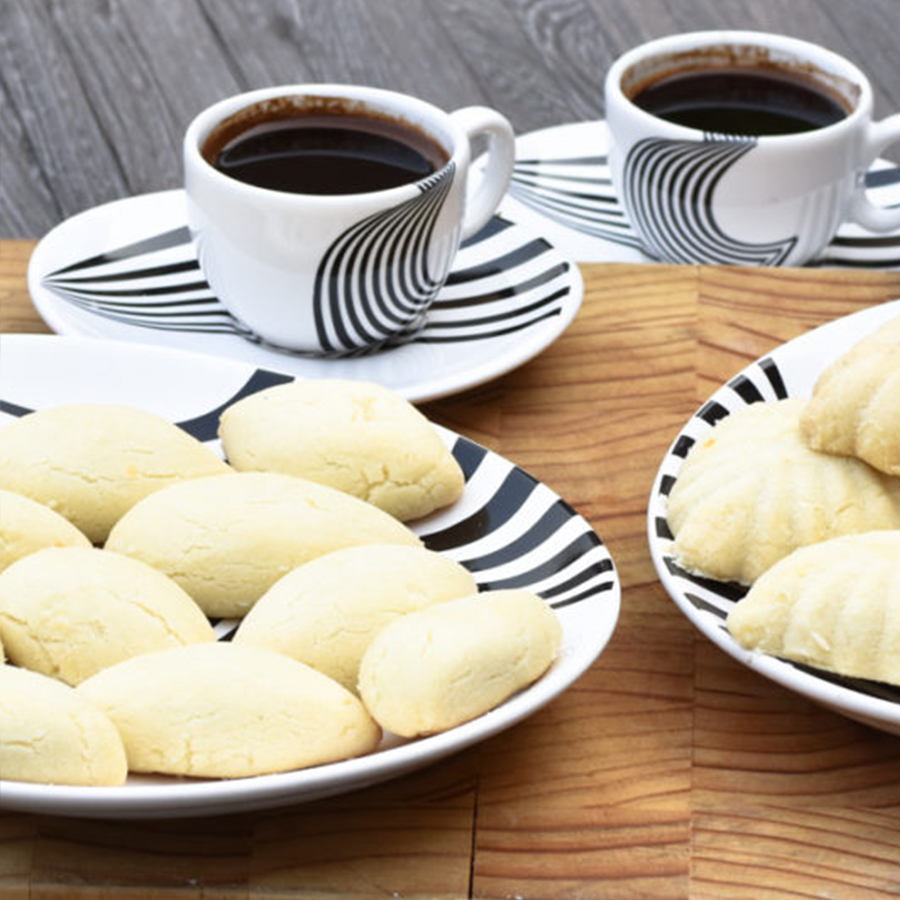
Here are few small things, that relatively can make a noticeable difference on the end result of sanioura:
- Ghee: Speaking of ghee, it’s very important here to use room temperature not melted ghee.
- Chilling sanioura dough helps prevent spreading, since it is a problem some people face when making saniora and ghraybe. It is advisable to chill the dough in the fridge for 30 minutes before portioning and shaping, this will guarantee they will keep their shape and won’t spread.
- The best way to ensure even baking is by making sure your sanioura cookies are uniform in size and thickness.
- The temperature and baking time should be just enough for the cookies to be baked through but still have a pale color. Over baking will cause them to be rock hard instead of and melt-in-your-mouth. I found that 160 ° C/ 320 °F for 15 minutes went perfect in my oven, but remember ovens are different, once the saniora get a minimal brown bottom, remove from the oven.
- Rotate your cookie sheet: Oven in bakeries are equipped with fans that circulate hot air into the baking chamber, this creates uniform heat distribution that leads to even baking. Some of these ovens have rotating racks that makes it possible to cook everything evenly! This is not the case at home ovens, so it is advisable to rotate your cookie sheets halfway through baking for even cooking.
- Just a minute or two in the oven separates sanioura from melt in your mouth to ones that are too far hard, so it is advisable to use a timer on these cookies, they bake quickly; check on cookies at 12 minutes of baking, you can cook them longer if necessary, note that the cookies should not brown on top. The only way to know for sure that they’re done is to roll one over and see that it’s just slightly brown on the bottom.
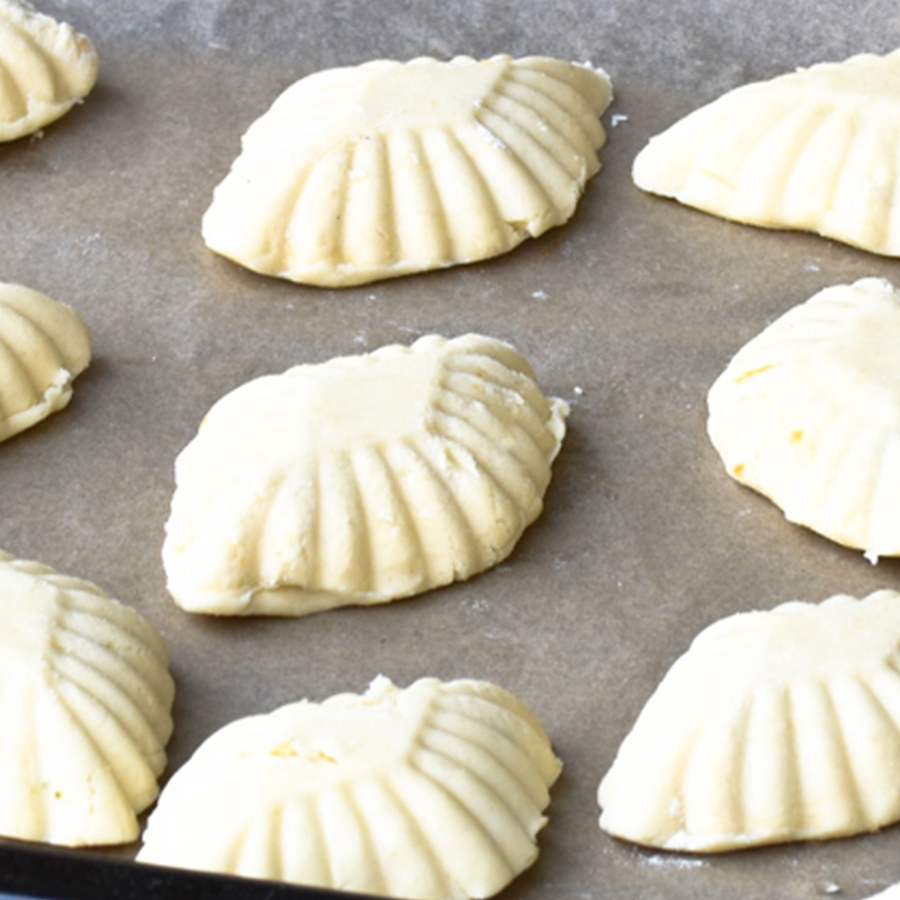
To make the pistachio sanioura:
Unlike the plain sanioura that needs no mold to shape it, pistachio filled sanioura gets a specific stainless steel oval mold, used for shaping and forming it . Last year I bought the mold, back in Lebanon from Saida. take a small handful of the dough, roughly the size of ping-pong ball. Make a hole in the center, with your finger fill the hole with a teaspoon of the pistachio filling. Seal the hole patching the dough together and roll it into a ball. Transfer into the mold, pressing it lightly in to level it up with the mold. Invert the mold and strike it a couple of times to release the cookie; you need to lightly dust the mold with flour before filling, this will facillitate the release of the pistachio filled sanioura out of the mold. When imprinting the pistachio sanioura dough with the mold, stop frequently to dust the patterns from the extra flour on top. Watch the video tutorial!
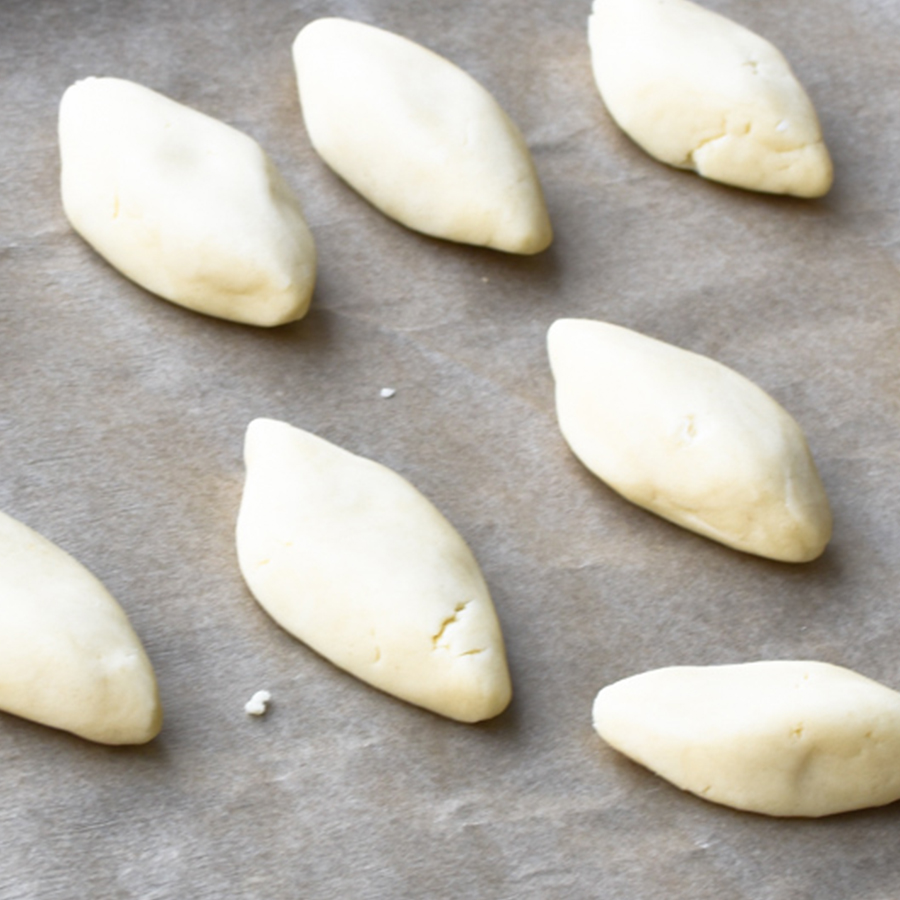
To make the plain sanioura
Take a small handful of the dough, roughly the size of a ping pong ball. Roll by rubbing it with your palms. Lightly flatten it to a thickness of 2 cm/ 0.8 inch. Try to shape each flattened ball to a rhombus by delicately shaping the edges, watch the video tutorial! Place on a sheet lined with parchment paper, leaving some space between one another.
Storage: Saniora may be kept in an airtight container for at least 2 weeks if stored properly.
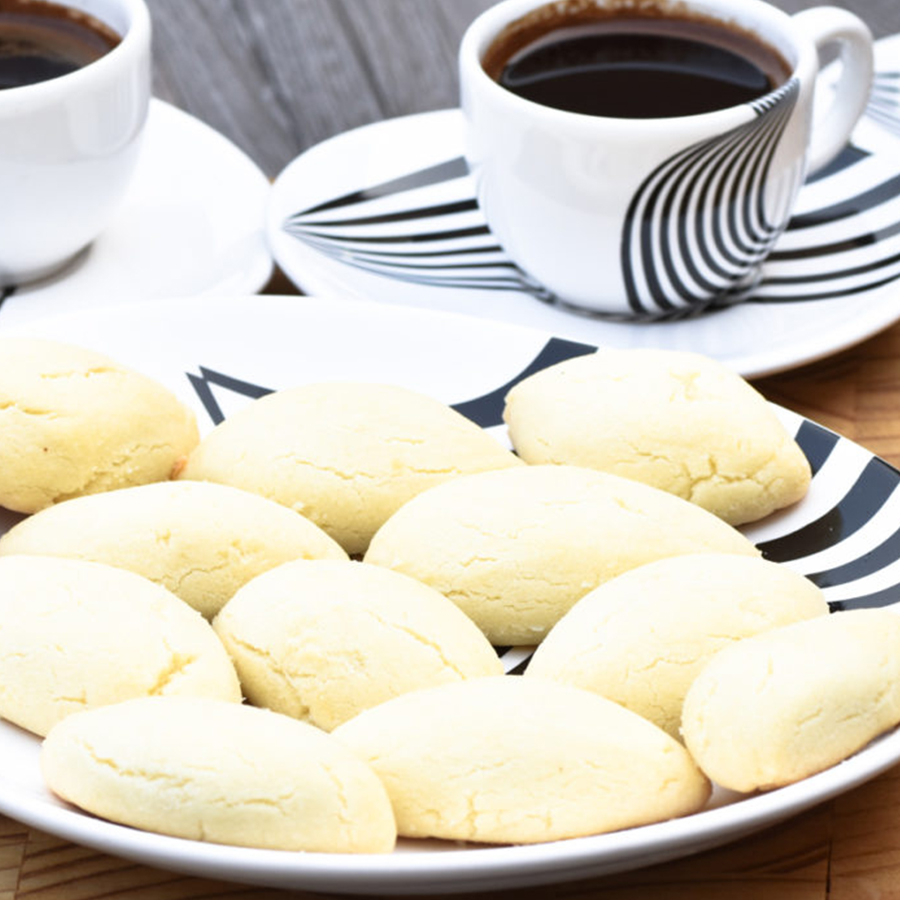
Plain and Pistachio Filled Sanioura
Description
Ingredients
- sanioura mold to shape the pistachio filled sanioura
- 500 grams / 3 1/2 cups all-purpose flour 3 1/2 cups
- 250 gram / 1 1/2 cup ghee
- 250 gram / 1 1/2 cups powdered sugar
For the pistachio filling:
- 3/4 cup shelled raw pistachios
- 1/4 cup sugar
- 1 teaspoon of ghee
Instructions
To make the dough:
- Place the ghee and powdered sugar in a large bowl, mix together with a spatula to integrate together ; add the flour a little at a time, and start mixing with the tips of your fingers. The mixture will first crumble, continue kneading until you have a dough of one texture, knead for more until it has a malleable texture. Alternatively, you can use your stand mixer. Transfer to a bowl, cover with plastic wrap and refrigerate for a minimum of 30 minutes and up to 12 hours. This will help prevent spreading, since it is a problem some people face when making saniora and ghraybe, this will guarantee they will keep their shape and won’t spread.
- Preheat oven to160 ° C/ 320 °F with a rack in the center of the oven.
- Line two baking trays with parchment paper.
- Place the raw pistachios in a food processor and pulse a few times to considerably grind the pistachios. Transfer to a bowl, add the sugar and ghee, and mix well to fully incorporate.
- Knead well the dough again, you will notice that chilling has solidified the fat in the dough, this will guarantee that the sanioura will keep their shape and won’t spread.
- Divide the dough into two equal portions. Use half of the dough to make pistachio filled saniora and keep the second half to make plain sanioura.
To make the pistachio filled sanioura:
- Unlike the plain sanioura that needs no mold to shape it, pistachio filled sanioura gets a specific stainless steel oval mold, used for shaping and forming it . Last year I bought the mold, back in Lebanon from Saida. take a small handful of the dough, roughly the size of ping-pong ball. Make a hole in the center, with your finger fill the hole with a teaspoon of the pistachio filling. Seal the hole patching the dough together and roll it into a ball. Transfer into the mold, pressing it lightly in to level it up with. Invert the mold and strike it a couple of times to release the cookie; you need to lightly dust the mold with flour before filling, this will facilitate the release of the pistachio filled sanioura out of the mold. When imprinting the pistachio sanioura dough with the mold, stop frequently to dust the patterns from the extra flour on top. Watch the video tutorial!
- Bake in the oven for about 12-15 minutes; rotate your cookie sheet: Ovens in bakeries have rotating racks that makes it possible to cook everything evenly! This is not the case in home ovens, so it is advisable to rotate your cookie sheets halfway through baking for even cooking. Check on cookies at 12 minutes of baking, you can cook them longer if necessary, note that the cookies should not brown on top. The only way to know for sure that they’re done is to roll one over and see that it’s just slightly brown on the bottom. Remove from the oven and leave them to cool down completely.
- To make the plain sanioura:
- To make the plain sanioura: Take a small handful of the dough, roughly the size of a ping pong ball. Roll by rubbing it with your palms. Lightly flatten it to a thickness of 2 cm/ 0.8 inch. Try to shape to a rhombus by delicately shaping the edges, watch the video tutorial! Place on a sheet lined with parchment paper, leaving some space between one another. Bake for 12 -15 minutes, as mentioned in making the pistachio sanioura, the cookies should not brown on top. The only way to know for sure that they’re done is to roll one over and see that it’s just slightly brown on the bottom. Remove from the oven and leave them to cool down before transfering to a serving plate. Serve with a cup of Lebanese coffee. Heavenly!
Video
Notes
 If you make these "Plain and Pistachio Filled Sanioura", share your pictures on Facebook! I would love to see your creations!Hashtag them #Hadia's Lebanese Cuisine
If you make these "Plain and Pistachio Filled Sanioura", share your pictures on Facebook! I would love to see your creations!Hashtag them #Hadia's Lebanese Cuisine

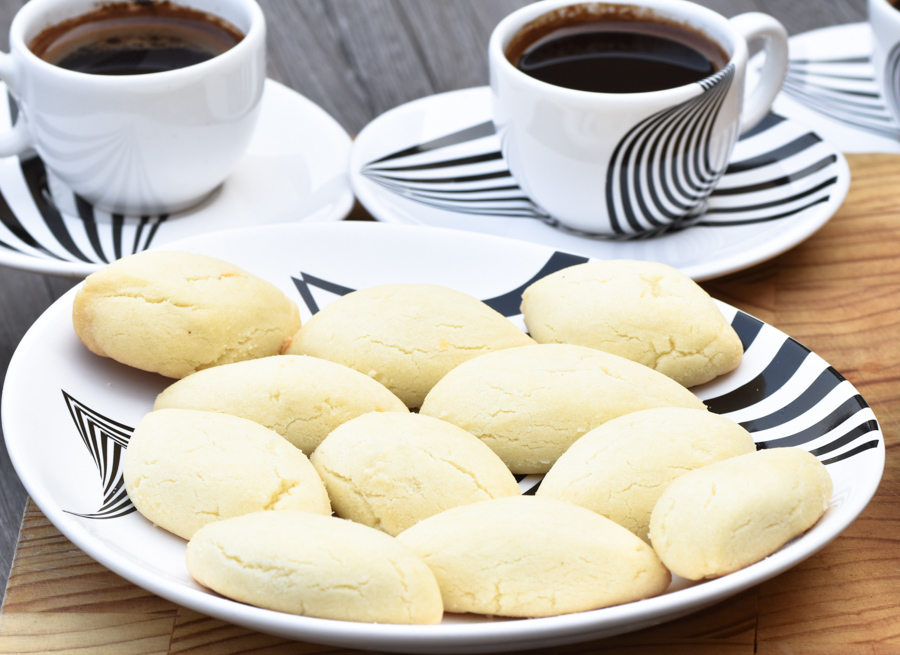
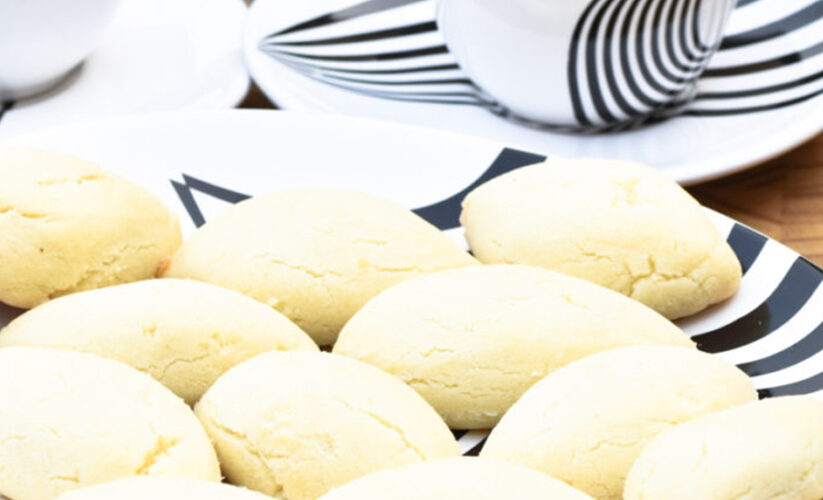
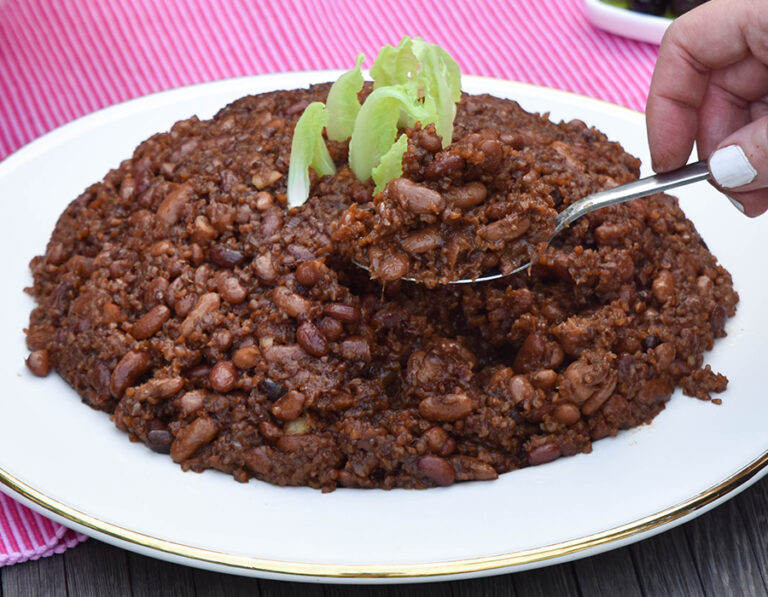
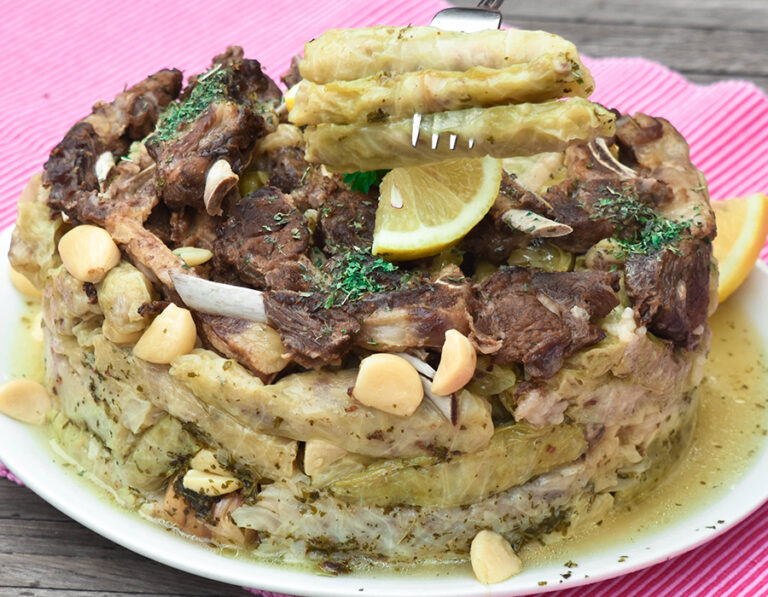
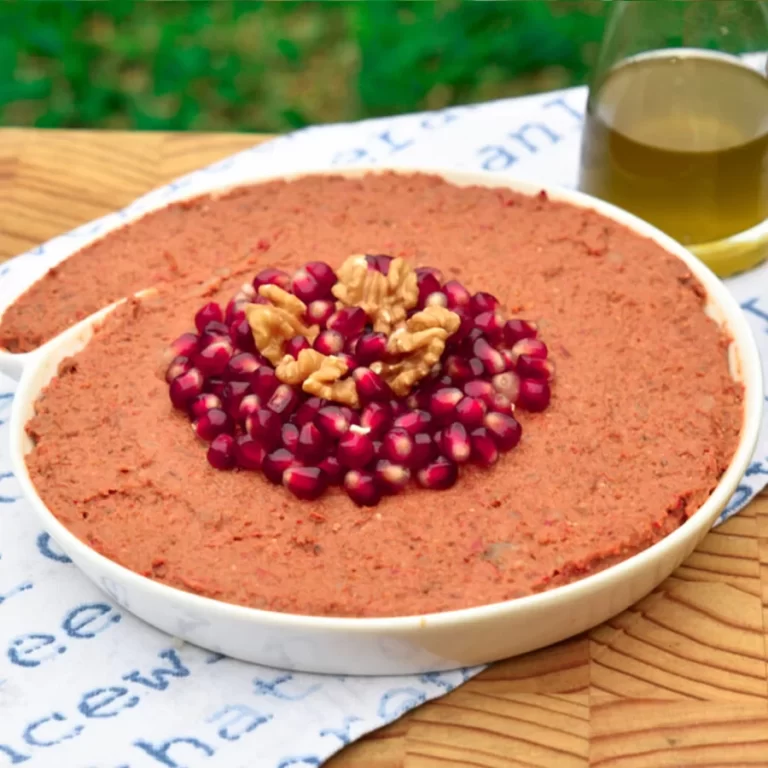
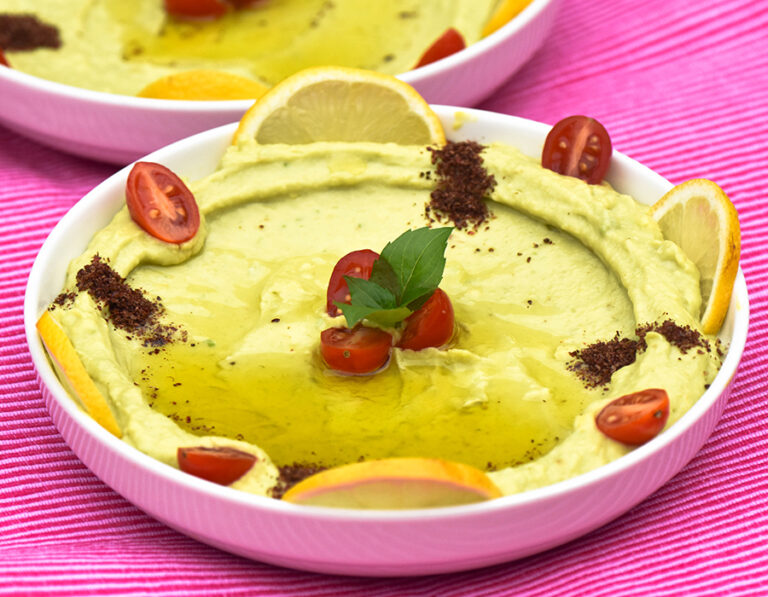

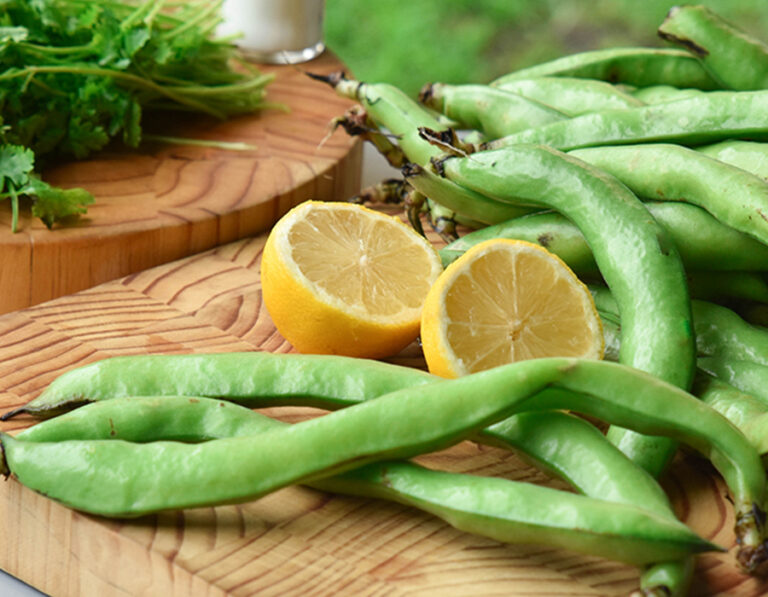
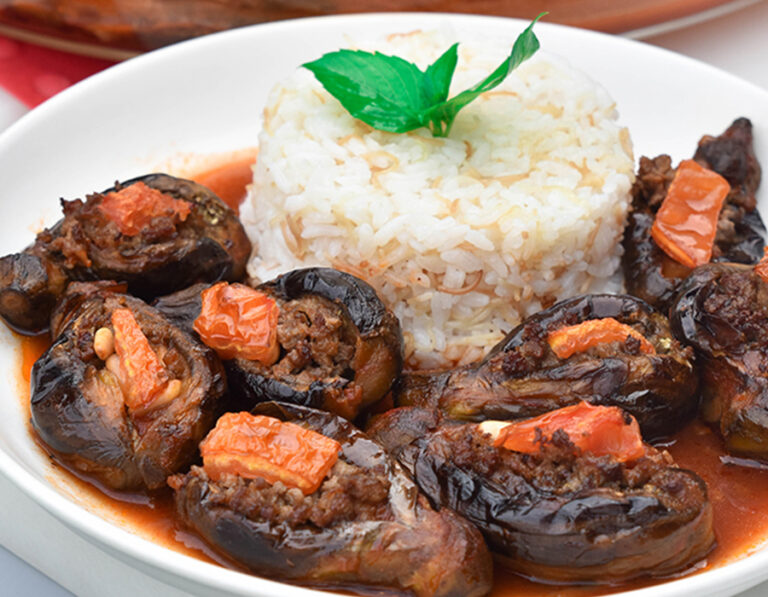
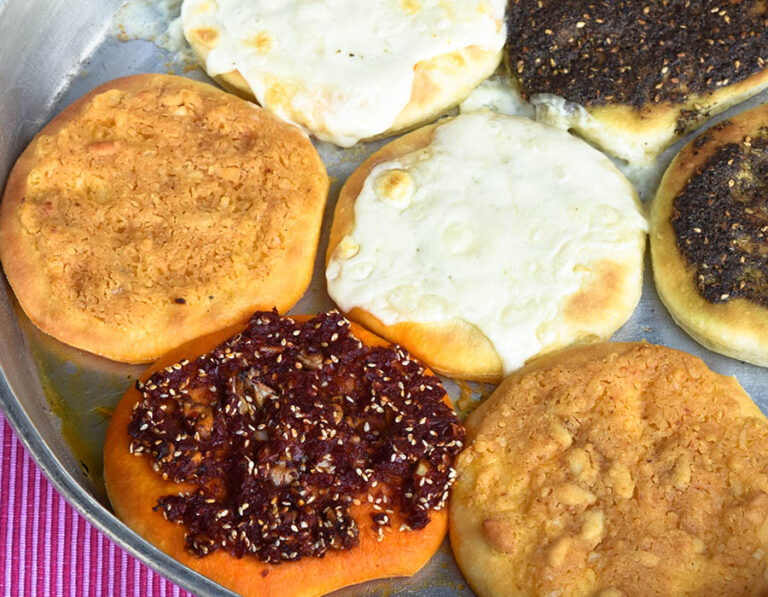




















1 Comment
[…] addition to these, Saida is also famous for its ‘Sanioura‘, a type of dry cake made from semolina, tahini, and sugar, typically enjoyed with a cup of […]